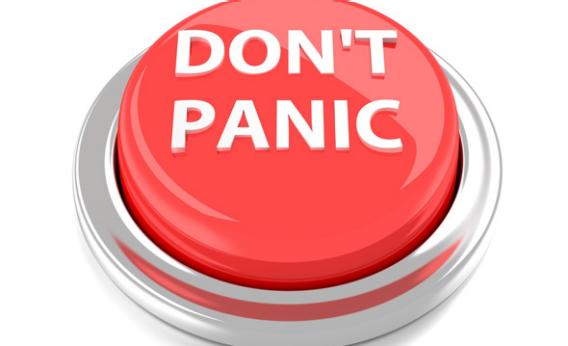Create a free profile to get unlimited access to exclusive videos, sweepstakes, and more!
No, Asteroid 2003 QQ47 Is NOT Going to Hit the Earth Next Week

Well, it took three months, but we have our first notpocalypse of 2014!
Twitter, Facebook, and other social media are spreading a story that a large asteroid named 2003 QQ47 might impact the Earth next week, specifically on March 21, 2014.
Let me be very clear right away: Nope. It won’t. This story is totally wrong! Well, the asteroid does exist, but it won’t hit us next week, and in fact can’t hit the Earth for at least a century. The truth is the asteroid will safely pass us on March 26 of this year, never getting closer than 19 million kilometers (nearly 12 million miles)—about 50 times farther away than the Moon!
(Update, March 15 at 17:30 UTC: Gianluca Masi at the European Virtual Telescope tells me they will observe this March 26 pass of QQ47 and webcast the images live, so you can watch as this rock safely glides past Earth for yourself.)
I’m pretty sure what’s happening here is that a very old story has been recycled and is getting spread around without anyone doing any fact-checking. It’s all over Twitter and got picked up credulously by some bigger venues like the Daily Mail, which posted it with the typically understated title of “Asteroid hurtles toward Earth.” What follows after that is a breathless and almost entirely incorrect article about 2003 QQ47 that seems to simply rehash information from more than a decade ago. Seriously.*
For example, the Mail article says the asteroid is “newly discovered,” but in fact was first detected in 2003, 11 years ago! Hence its name, 2003 QQ47. It was found to be a near-Earth asteroid, or NEA, one that does sometimes get close to us. For a while after it was discovered it was thought to have a small chance of hitting Earth, with an impact probability in August 2014 of about 1 in 250,000. But by September 2003 new observations allowed a better trajectory to be calculated, and an impact in 2014 was ruled out. This happens quite often, where a new asteroid will have only a rough orbit calculated, and an impact has long but non-zero odds of hitting us. As more observations come in the chances of impact can actually increase briefly before dropping to zero.
This is what happened with QQ47 back in 2003. Got that? An impact in 2014, this year, was shown to be out of the question more than a decade ago and was even taken off JPL’s Sentry Risk page at that time, when it was found to have no potential Earth impacts for at least 100 years. We’re quite safe from this particular asteroid.
The Mail article also has a quote by an astronomer named Alan Fitzsimmons, and I was able to trace this exact quote back to a CNN article and another in the Guardian … again both from 2003.
Given this, it makes me think the Mail article was either an old one that got recycled (though there is no indication on the page of this), or they just cut-and-pasted information from an old article or from some, um, less than realistic websites which panic every time an NEA comes ‘round (several New Age-y and anti-science sites have articles about a possible impact this month by QQ47). Oddly, no author is listed on the Mail article.
I’ll also note that in a Mail article from March 12, 2014 (just a few days ago) about asteroids and NASA, there is a special section highlighting the “threat” from QQ47, using that same out-of-date information and quote. Wow.
Not surprisingly, asteroid impacts terrify a lot of people, and so whenever there’s a rumor like this it spreads like a virus. That’s the downside of instant communication, of course. Hopefully this time we can stop it before it spreads too far.
Actually, to give you a little bit of real science, this is a pretty interesting rock. Its size isn’t well known, but it’s something like 800 to 2,000 meters (0.5–1.2 miles) in diameter. Its orbit around the Sun is roughly the same size as Earth’s but tipped by more than 60°, which is fairly unusual. This means it swings past us relatively often but tends to stay a long way away. The closest approach I saw for it is when it gets to within about 9 million km (4.5 million miles) from Earth in—get this—March 2170.
As an astronomer, I find asteroids fascinating, and it’s compelling to learn more about their potential threat to Earth. That threat is very real, and it does not help to stir the pot with false information. Besides making it harder to convince people how dangerous they really are (the “cry wolf” syndrome) it needlessly scares people. Oddly enough, I’m not a big fan of that.
If you hear about a potentially threatening asteroid and want more info, your first best bet is to go to the JPL risk page and see if it’s there. Another good way is to follow me on Twitter, as well as JPL’s Asteroid Watch, Ron Baalke, and Amy Mainzer. If there’s a rock out there with our name on it, we’ll be talking about it.
Tip o’ the Whipple Shield to Scott Peterson.
* If you get the impression I’m less than a big fan of the Daily Mail, then give yourself a gold star, or a nickel-iron asteroid, whichever is easier.


























